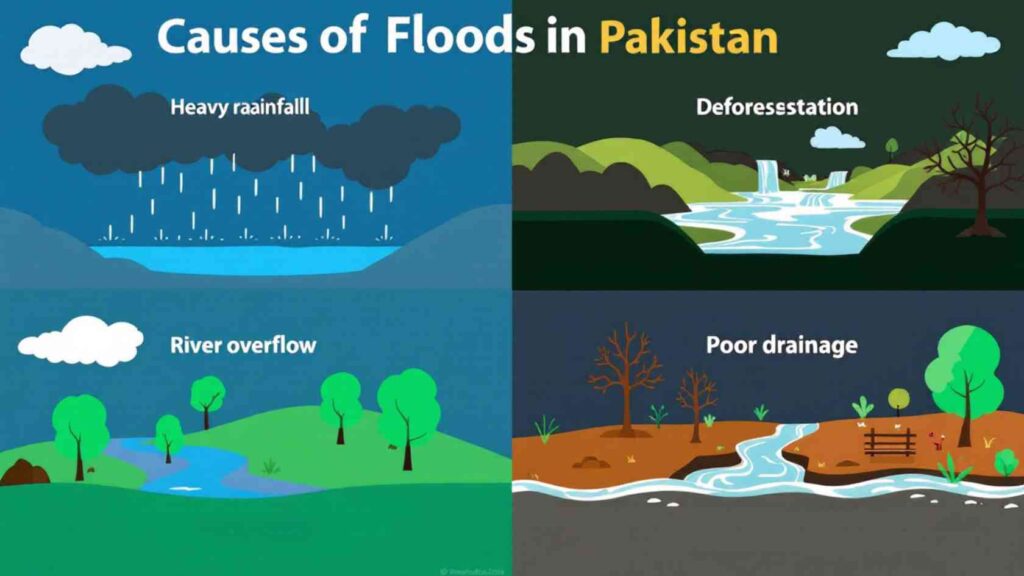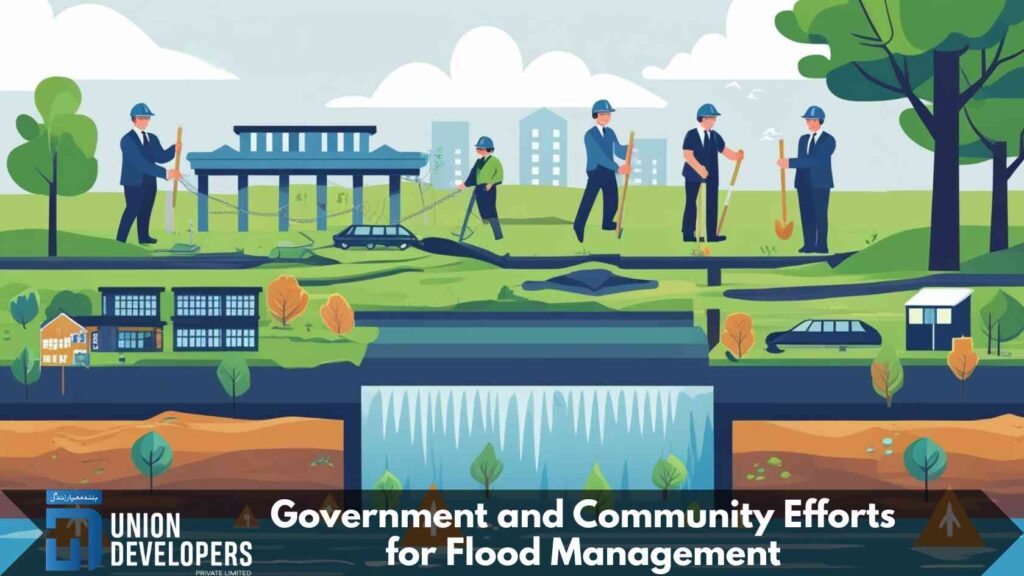Pakistan has faced many devastating flood crises over the past years. These floods have affected thousands of people and also caused immense economic losses. The country’s climate and geographical conditions make it very vulnerable to floods. Floods have affected many countries, and understanding the causes of floods in Pakistan is crucial. We cannot stop the floods, but we can prepare to fight against them by building flood-proof houses. Let’s discuss this in detail.
Causes of Floods in Pakistan
Floods happen when there is non-stop rain and excessive water gathers in a place. The uncontrollable water can also gather due to rapid snowmelt or storm surges. The excessive water causes lakes and rivers to spread and overflow water. In a country where snowfall happens, the monsoon season causes excessive rainfall and is more likely vulnerable to floods.

Sometimes the soil on the ground makes the floods worse by soaking up the water like a sponge. Pakistan’s atmospheric conditions lead to the rapid melting of snow and heavy rainfall. When floodwater spreads, it can threaten lives, damage properties, and damage infrastructure. The effects of heavy floods are long-term and can be very disruptive, costly, and distressing for the communities involved.
Monsoon Rains and Climate Change
Pakistan experiences heavy monsoon rains, which is one of the causes of floods. In the past few years, due to climate change, rains have been more intense and frequent, resulting in heaving floods. The rising global temperature has changed the weather patterns, leading to unwanted and long monsoon seasons and causing havoc in rural and urban areas.
Melting Glaciers
Glacier meltdown is one of the main causes of landslides and devastating floods. Pakistan has over 7,000 glaciers, many of which are melting due to global warming. The meltdown of glaciers causes excessive water flow into the rivers, ending up in floods. It flows more into the low-lying and northern regions. Now the glacier lake outburst floods have become more rapid and frequent in Pakistan.
Deforestation
Deforestation reduces the ability of the land to absorb rainwater, leading to increased surface runoff and soil erosion. Lack of greenery and tree cover means that excess water finds its way to the lakes and rivers, causing flooding and overflow. You see how connected these things are, and one thing is disturbed, then other excesses.
Poor Infrastructure and Drainage System
Many areas in Pakistan suffer from inadequate drainage systems. If you live in Pakistan, then you must have observed that heavy rains overwhelm drainage networks, resulting in urban flooding. Due to a blocked drainage system, the rainwater floats in the roads and streets, causing water overflow.
Dam Failures and River Overflow
Pakistan’s major rivers, such as Indus, Jhelum, and Chena, often overflow during heavy rains. Moreover, improper dam management and breaches add to the flood conditions. The poorly designed embankments collapse and worsen flood situations.
Now, let’s discuss some of the most devastating floods in Pakistan.
| Year | Flood | Death Number | Population Affected | Impacts |
| 1950 | The Great Flood | 2,190 | 10M | Immense destruction of Infrastructure and crops |
| 1973 | Indus Flood | 474 | 4M | Serious damage to houses and displacements |
| 1976 | Monsoon Flood | 425 | 5M | Severe damage to Punjab and Sindh |
| 1992 | Super Flood | 1,834 | 12M | Widespread damage across Pakistan |
| 2010 | Pakistan’s Worst Flood | 1,985 | 20M | 20% of the country submerged and a huge economic loss |
| 2022 | Catastrophic Floods | 1,739 | 33M | Largest displacement crisis, 1/3rd of Pakistan submerged |
Why Do We Need Flood-Proof Houses?
As we discussed the major causes and some past flood disasters, there is an urgent need for flood-proof houses that can stand tall over extreme weather conditions. Some of the prominent features of such housing structures include:

Strong Foundations
If the houses are raised on stilts or elevated platforms, it can prevent floodwaters from entering the living space. It reduces the damage to houses during flooding or other weather extreme catastrophes.
Water-Resistant Materials
Using materials like treated wood, reinforced concrete, and waterproof bricks can enhance a house’s ability to withstand excessive exposure to water.
Efficient Drainage Systems
Incorporating proper drainage systems around urban areas and homes can help channel excess water away from the living zones.
Community-Based Flood Management
Constructing flood barriers and retaining walls in vulnerable areas can safeguard the entire community from extreme flooding.
Sustainable Land Use Planning
Proper urban planning, reforestation, and zoning regulation can help mitigate the impact of floods. Encouraging plantations and green spaces and restricting construction in flood-threatening areas can minimise risks.
Government and Community Efforts for Flood Management
Pakistan has been making efforts to combat flood disasters through many initiatives. Some key measures include early warning systems, disaster-relief programs, early warning systems, disaster relief programs, and international aid and collaboration.

These initiatives help to control disastrous situations and also prepare the country for any unforeseen catastrophes.
Lastly,
Floods in Pakistan pose a huge threat to lives, infrastructure, livelihoods, and the economy. Addressing the reasons behind the flooding is crucial to making better climate resilience strategies. Incorporating proper drainage systems around urban areas and homes can help channel excess water away from the living zones. Focusing on afforestation and improving water management can reduce the impact of floods in Pakistan.
Also, the construction of flood-proof houses can ensure that communities remain protected and provide long-term solutions. With the support from the government, urban planners, and residents, Pakistan can build a more resilient future against floods.





